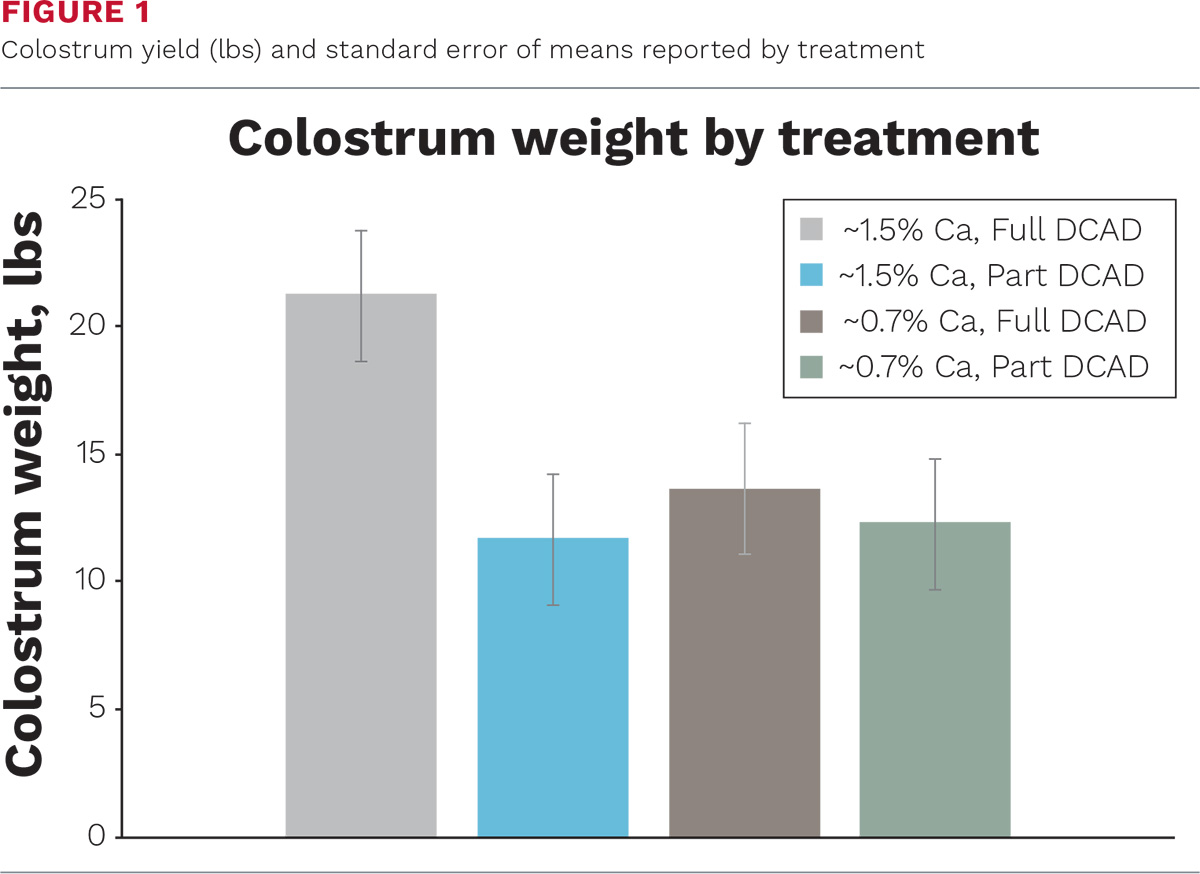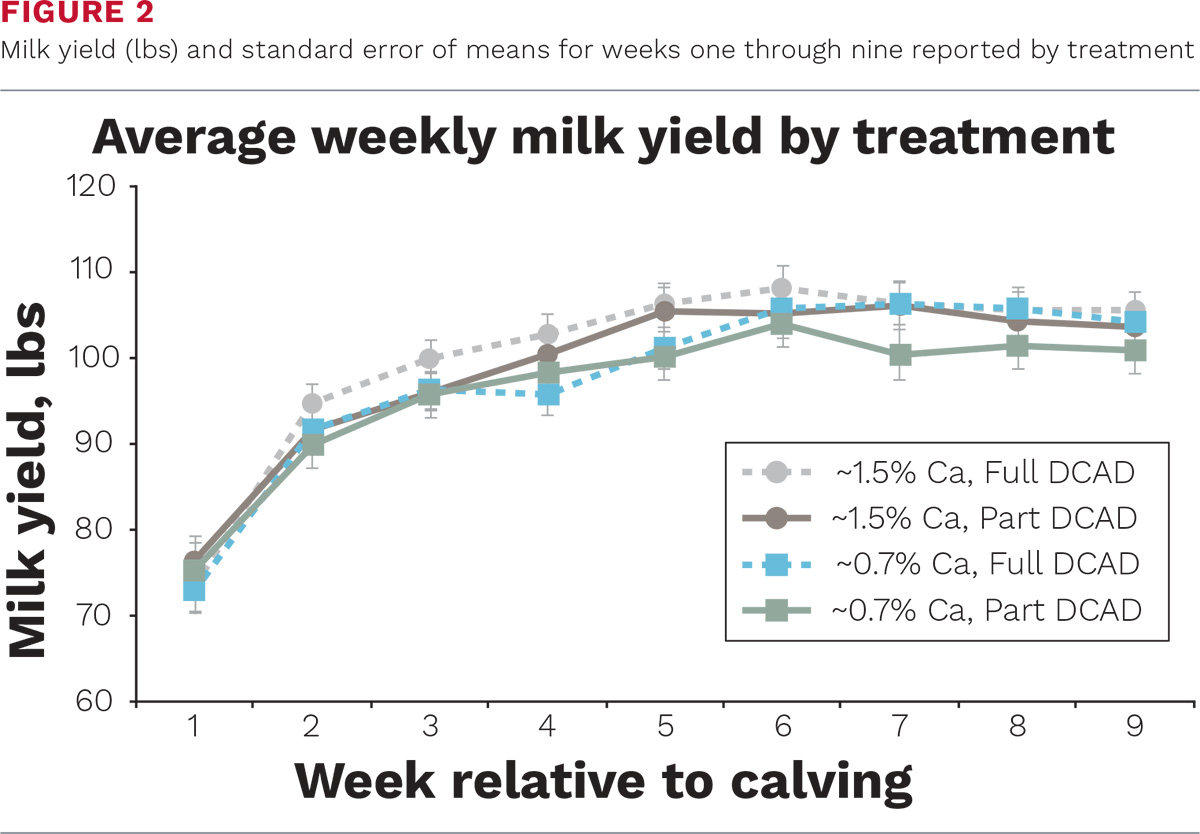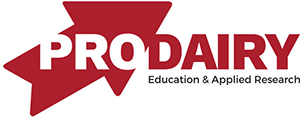The transition period is a tumultuous period for a cow and those of us trying to manage them. During this time cows are particularly prone to mineral and metabolic imbalances that can leave them more susceptible to diseases as well as lower milk production and poorer reproductive performance. Of particular concern is the issue of calcium (Ca). At and around calving calcium is in high demand for fetal development, birth, and lactation, while leaving enough for a cow’s normal physiologic needs. Fortunately we can prepare the cow to improve her chance of success through this transition period by managing the dietary cation-anion difference (DCAD) in the close-period to improve her calcium metabolism around and after the time of calving. This allows her to more efficiently use calcium stores rapidly when she needs it most. There are also some strategies to consider when managing dietary Ca. When it comes to either Ca or DCAD feeding, the question always returns to, if we choose one or both strategies, how much is enough?
This can be a difficult question to answer, but recent work at Cornell University’s Ruminant Center sought to do exactly that. The objective of the study was to determine the effects of two levels of DCAD and two levels of dietary Ca on cow mineral status and production through the transition period. It was hypothesized that cows fed more DCAD and dietary Ca would have improved mineral status and milk production. The two levels of DCAD fed in the close-up period, 21 days prior to expected calving, were categorized as either “FULL” or “PARTIAL” and determined by urine pH. Cows fed “FULL” DCAD diets targeted a urine pH of 5.5 to 6.0 and those fed “PARTIAL” DCAD targeted a urine pH of 6.5 to 7.0. The two levels of Ca fed in that period were either 1.5 percent or 0.7 percent of DM.
Overall, four diets were tested:
- 1.5 percent Ca FULL
- 1.5 percent PARTIAL
- 0.7 percent FULL
- 0.7 percent PARTIAL
Sample collection began at enrollment (39 to 32 days before expected calving) through study exit (63 DIM) and included feed intake, and blood and urine samples for mineral analysis, colostrum, and milk yield.
CLOSE-UP RESULTS
Average urine pH for cows fed FULL and PARTIAL were well within their targets (FULL = 5.64 vs. PART = 6.71 ± 0.10). Dry matter intake (DMI) was lower in cows fed FULL DCAD diets than those fed PARTIAL (28.99 vs 29.32 ± 0.5 lbs/d). Drops in DMI during the close-up period, such as those observed in this study, is generally expected to be greater in cows fed acidified diets. This study included two Ca measurements in the blood, ionized and total (iCa and tCa, respectively). Ionized calcium is referred to as the available and “active” Ca, which is considered free for use by the cow. Alternatively, tCa refers to the total circulating Ca in the blood in both bound and free form. Given that they measure different components, while numerically different, some relative association between the two measures are often observed. Interestingly in this study, prepartum tCa was reduced in those cows fed FULL, though that finding was not replicated in the prepartum iCa measures. Urine Ca excretion rate was increased in cows fed FULL and cows fed 0.7 percent Ca in the close-up (there was no observed interaction of Ca X DCAD).
POSTPARTUM RESULTS
Cows fed 1.5 percent Ca prepartum tended to eat more in the postpartum period than cows fed 0.7 percent Ca (48.1 vs. 46.1 ± 0.8 lbs/d; P = 0.07), respectively. Conversely, previous studies have reported increased prepartum DMI to increased calcium diets. Dietary Ca significantly impacted blood iCa and tCa so that cows fed 1.5 percent Ca had decreased concentrations of both compared to cows fed 0.7 percent Ca during the first two DIM. These blood parameters are particularly interesting when evaluating the colostrum and milk results. Colostrum weight tended to be about 7.6 lbs greater in cows fed the 1.5 percent Ca FULL diet prepartum compared to the other treatment groups (Figure 1) without significant differences in quality (measured by IgG); however, this was an unexpected outcome and warrants more research.

Additionally of note, recorded milk yields in weeks one through three and one through nine tended to be greater in cows fed 1.5 percent Ca FULL opposed to the other three diets (Figure 2).

MAIN TAKEAWAYS
While there were some decreases in both iCa and tCa postpartum in cows fed 1.5 percent Ca diets, milk yield tended to increase in cows fed 1.5 percent Ca FULL. Colostrum yield increased for cows fed 1.5 percent Ca FULL compared to other treatments.
Overall, it is recommended that a high-Ca diet fed in conjunction with a well-managed DCAD strategy that targets a urine pH range of 5.5-6.0 is optimal in transition cows.
 |
This article appeared in PRO-DAIRY's The Manager in November 2022. To learn more about Cornell CALS PRO-DAIRY, visit PRO-DAIRY. |





